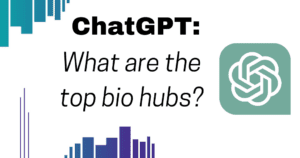
Immediately Better Hiring: 9 Things to Do Right Now
Guest Post by James Ellis, Principal of Employer Brand Labs
June 12, 2023
Want to hire better? Of course you do. Your business will stall out (and you’ll have to start looking for a new job) unless you can keep up a steady stream of great hires straight to your hiring managers.
But things like developing an employer brand or investing in new tech platforms can seem to take forever. Is there anything you can do immediately that will make a difference?
There sure are. Here are nine impactful, useful and effective means of elevating your talent acquisition efforts that work immediately.
Stop posting “We’re hiring” and “Join Us” posts on social media (or anywhere)
I could write an entire article on all the amazing, compelling, valuable and effective things you could say in a social post about open roles, about how you could start by talking about why someone should be interested in a role, or relating to the target audience because you understand something about them, or maybe just asking a question that sparks curiosity.
But no matter what you choose to say, you can’t say something interesting until you stop using filler phrases like these. If someone doesn’t know anything about your company, Join Us and We’re Hiring doesn’t give them a reason to learn more. In fact, they will only be interested because you have a job, not because they really want your job.
Write a compelling headline for your career site
90% of biotech startups miss the opportunity to set a frame for an incoming visitor about what makes the company interesting or different. They have headlines that say “careers,” “open roles,” “job listings,” or the dreaded “join us” in 120pt font as if these terms are anything more than labels for the page.
Biotechs often fret because they don’t have the kind of wide brand awareness of their far larger competitors. But rather than say something deserving of interest and awareness, they say nothing.
Instead, use your career site headline (and accompanying hero image and intro paragraph) to say something worth remembering. This is the space where you plant a seed you hope to see sprout and flower over the course of the candidate experience.
This isn’t about hyperbole or hype. It is about connecting to the reason why your company had to be started, and why you are all choosing the harder path of a startup. At last count, there were 6,600 biotech companies in the US, with most of these being small or startup firms. Treat the career site headline as the reason your company should be chosen over the thousands of others.
Create headlines for your job postings
For job seekers, your job posting is their very first impression of you. So why base that impression on a series of poorly-written bullet points describing what you want instead of starting a story about why they should choose you?
If you had never seen the movie Titanic and before turning it on, I told you it was a romance movie, you’d probably also be satisfied. Heck, you’d probably call it a classic. If I told you it was an action movie, you’d be pretty satisfied. But if I told you it was a comedy, how happy with it would you be?
Setting the frame is how you get complete strangers to understand what you’re trying to say. It is how you begin to establish expectations that you can meet, if not flat-out exceed. So think about the very first thing these strangers see and turn it into a catchy, engaging reason to continue reading.
Rewrite your benefits
I’m going to tell you right now, all the first you compete with have great benefits. They offer plenty of PTO and insurance. Using pixels on your career site to say the same isn’t going to help you get what you want.
At issue is that everyone is hitting limits. I have never heard of a company paying 110% of insurance premiums, so how are you going to compete against ten companies all paying 100% of them?
The answer is in the how. If you pay 100% of the health insurance bill, why? Is it to help employees focus on their projects? Is it because you care about them as people? Is it because your mission is to eradicate disease and thus it is congruent to pay for anything that supports that? It allows people to perform? It gives their families peace of mind? It makes you feel good to be able to say to investors?
The “why” is magical. Not only does it help you differentiate your commoditized benefits, it supports your larger brand promise. If you’re a company focused on performance before all else, paying for premiums allows people to perform. If you’re a mission-driven company, paying premiums is just the right thing to do. If you’re a status-driven company, paying premiums allows you to say you offer the maximum benefit.
Reorienting your benefits to the why is a fast and credible way to make your brand promise feel real.
Pick four companies just like you and do something different
Hiring is a zero-sum game. If a candidate chooses to work at another company, they can’t also choose you. So the goal isn’t to be more interesting and attractive than every other company, but to be more attractive and interesting than your immediate competitors.
So figure out what they are doing and saying. Then look at what you are doing and saying. Could a stranger see a difference?
If everyone is using medical research imagery, maybe you need to use photos of your people collaborating. If everyone is talking about how many people their work will impact, you should talk about the work experience and culture there. If
This is a game of differentiation. If you can’t stand out, no one will choose you (other than as a fallback position).
Re-think your DEI statement
The biggest challenge in DEI is that it has become a box that needs to be checked rather than a meaningful initiative or differentiator. Most companies have diversity statements on their careers pages and most of them sound ripped from the same reference book.
The fastest way to keep your DEI statement from becoming meaningless poster fodder is to talk about why you care about it and what choices you’ve made because of it.
Perhaps your company is livid about how the medical industry has ignored the needs of women, black patients, or anyone they deem “out of scope.” Perhaps it is because the disease state you are targeting affects LGBTQ+ audiences in disproportionate numbers. Perhaps it is knowing that a wider variety of voices leads to better and more creative solutions.
Talk about how building diverse benches has led to useful friction as you evaluate data. Talk about how hiring historically “under-valued talent” has allowed you to hire better quality talent who are not only more productive, but more motivated to perform.
Make the reason more than “because it’s the right thing to do” because there’s nothing more you or anyone can say. It is a cul-de-sac of a talking point, and when you’re fighting for every hire, you need everything you say to support your work.
Kill your stock photos
The job of a career site is to describe what it is like to work there and why someone should work there. How are you doing that using photos of some other company?
Look, I know how easy it is to buy a slick picture of someone’s comforting hands on a hospital patient’s shoulder to suggest how much you care. But the word “easy” in that statement should be a huge red flag. Because if it’s easy for you, it’s easy for everyone else. And if everyone else is doing it, you should think twice.
Imagine how it would look if the image you bought to put on the front of your career page was also on your competitor’s career site. Think that’s impossible? It’s not. I once discovered that happening on the career sites of two competing insurance companies. Oops.
So get rid of them.
Make your awards mean something
You won a “pretty darn lovely place to work” award? Guess what? So did everyone else. There are almost as many awards out there as there are companies to claim them.
The value isn’t in the award itself. It is in how you use the award. Most companies just post the badge accompanied by a social post on LinkedIn that says, “We’re honored to accept this award” and are stunned it doesn’t get anyone engaging with it. I mean, why would they?
Want people to think you’re a collaborative work environment? Talk about the award as proof of your collaborative process, as validation that the long hours of coming to an agreement were worth it.
Want people to think your work culture is amazing? Well, first define what that means to you (culture, like strategy and synergy, is one of the most over- and misused words in business), but then talk about how you only won the award because of that culture.
Imagine an award like that as a gold star. Until someone knows why you earned that gold star, it’s just a shiny bit of paper.
Prove it
As a candidate, you are bombarded by claims about why this company has an amazing commitment to performance and that the company cares the most about its people. There is no lack of positive claims being made.
But what is in short supply is proof. Have a great culture? Prove it. Treat your people like they are the most important part of your business? Prove it. Care more about curing this disease state? Prove it. Think you’re the best place to work?
Prove it.
In many ways, when overwhelmed with claims, it isn’t the best claim that wins, it is the most credible. Would you buy I car I said went 300mph and used a thimble of gas to do it? Or would you prefer the car with the proof that it went 90mph and had a mileage rating of 38mpg? The second one every single time, purely because they proved what they claimed.
Look at all the things your career site, job postings and recruiters say and ask, “How do we prove it?”
Then get to work.
DISCLAIMER: This article was submitted as a guest post by a member of the BioBuzz community and was not written by BioBuzz staff. The views and opinions expressed in this article are those of the author listed above.
- About the Author
- Latest Posts
James, principal of Employer Brand Labs in Chicago, is a born employer branding nerd whose mission is to create a million employer brand thinkers. He is an author, keynote speaker, practitioner, and podcaster with a wealth of experience across multiple industries for almost a decade. James’ achievements include authoring what’s been called the bible of employer branding, managing the number one employer brand newsletter in the world and helping companies globally establish and develop their ability to hire talent.










